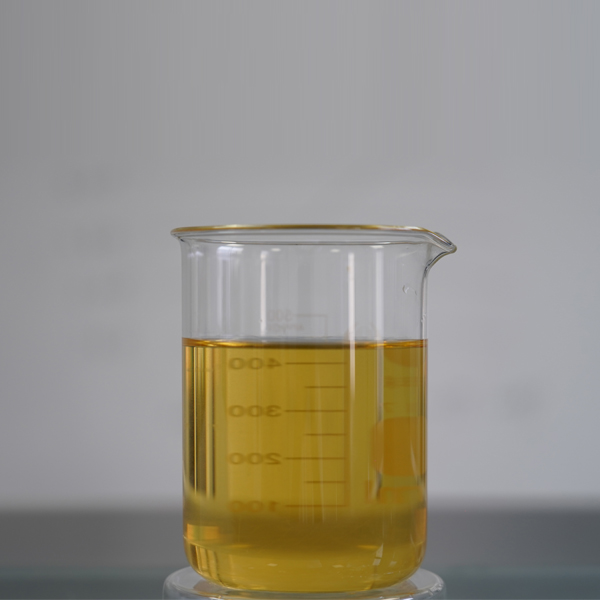
News
Dhj . 12, 2024 10:40 Back to list
poly l aspartic acid sodium salt
Poly L-Aspartic Acid Sodium Salt An Overview
Poly L-aspartic acid sodium salt (PLAS) is a synthetic polymer derived from the amino acid L-aspartic acid. It has garnered considerable attention in various fields due to its unique properties and versatile applications. This biodegradable polymer not only exhibits excellent biocompatibility but also offers significant environmental benefits, positioning it as a favorable choice in sustainable development.
Composition and Properties
Poly L-aspartic acid sodium salt is characterized by its anionic nature, which arises from the presence of carboxyl groups in its polymer chain. The sodium salt form enhances its solubility and stability in aqueous environments, making it suitable for a wide range of industrial applications. PLAS possesses a high degree of flexibility and elasticity, which enables it to be processed into various forms, including gels, films, and powders.
One of the most noteworthy properties of PLAS is its biodegradability. As an aliphatic polyester, it breaks down into non-toxic byproducts under natural conditions, reducing the risk of environmental pollution. This attribute makes PLAS an excellent alternative to traditional petroleum-based polymers which contribute significantly to ecological harm.
Applications in Agriculture
In agriculture, poly L-aspartic acid sodium salt has been explored for its potential as a soil conditioner and water retention agent. Its ability to form gel-like structures allows it to retain moisture in the soil, thereby improving the hydration of plants and reducing the frequency of irrigation. This not only conserves water resources but also enhances crop yield, particularly in arid regions.
Moreover, the polymer can act as a slow-release agent for fertilizers, minimizing nutrient leaching and promoting efficient nutrient uptake by plants. By integrating PLAS into agricultural practices, farmers can foster sustainable farming methods, contributing to food security and environmental preservation.
Biomedicine and Pharmaceutical Applications
poly l aspartic acid sodium salt

The biocompatibility of poly L-aspartic acid sodium salt renders it a candidate for innovative biomedical applications. PLAS has been investigated for its use in drug delivery systems, where it can encapsulate therapeutic agents and provide controlled release mechanisms. This property is particularly valuable in treating chronic diseases where sustained drug availability is crucial.
Furthermore, due to its biodegradable nature, PLAS is being researched for tissue engineering applications. It can serve as a scaffold material, supporting cell growth and tissue regeneration. The incorporation of PLAS in medical devices and regenerative medicine has the potential to revolutionize treatment approaches for injuries and degenerative diseases.
Cosmetic Industry Infiltration
The cosmetic industry is also tapping into the benefits of poly L-aspartic acid sodium salt. Its moisturizing properties make it an attractive ingredient in skincare formulations, enhancing the hydration of the skin. Additionally, PLAS is known for its ability to create a smooth, soft texture, improving the overall feel of cosmetic products. As consumers increasingly demand environmentally friendly and sustainable beauty options, the inclusion of biodegradable ingredients like PLAS is likely to grow.
Future Perspectives
The future of poly L-aspartic acid sodium salt appears promising as research continues to unveil its full potential. Ongoing studies aim to explore its multifunctional capabilities and enhance its applicability in various industries. Innovations in synthesis methods may lead to the production of modified versions of PLAS with tailored properties suited for specific applications.
As the world grapples with environmental challenges, the shift towards biodegradable materials is becoming more imperative. The inherent sustainability of poly L-aspartic acid sodium salt aligns with global efforts to reduce plastic waste and promote circular economy principles. With increasing regulatory support and consumer awareness, PLAS is poised to play a significant role in the development of greener technologies.
Conclusion
In summary, poly L-aspartic acid sodium salt is a multifaceted polymer with a diverse range of applications across industries such as agriculture, biomedicine, and cosmetics. Its biodegradable nature and unique properties position it as a vital player in the quest for sustainable, eco-friendly solutions. As research progresses and applications expand, PLAS is set to make substantial contributions towards achieving a more sustainable future. The exploration of this polymer is not just a step forward in material science but also a stride towards environmental responsibility and innovation.
-
Polyaspartic Acid Salts in Agricultural Fertilizers: A Sustainable Solution
NewsJul.21,2025
-
OEM Chelating Agent Preservative Supplier & Manufacturer High-Quality Customized Solutions
NewsJul.08,2025
-
OEM Potassium Chelating Agent Manufacturer - Custom Potassium Oxalate & Citrate Solutions
NewsJul.08,2025
-
OEM Pentasodium DTPA Chelating Agent Supplier & Manufacturer High Purity & Cost-Effective Solutions
NewsJul.08,2025
-
High-Efficiency Chelated Trace Elements Fertilizer Bulk Supplier & Manufacturer Quotes
NewsJul.07,2025
-
High Quality K Formation for a Chelating Agent – Reliable Manufacturer & Supplier
NewsJul.07,2025
